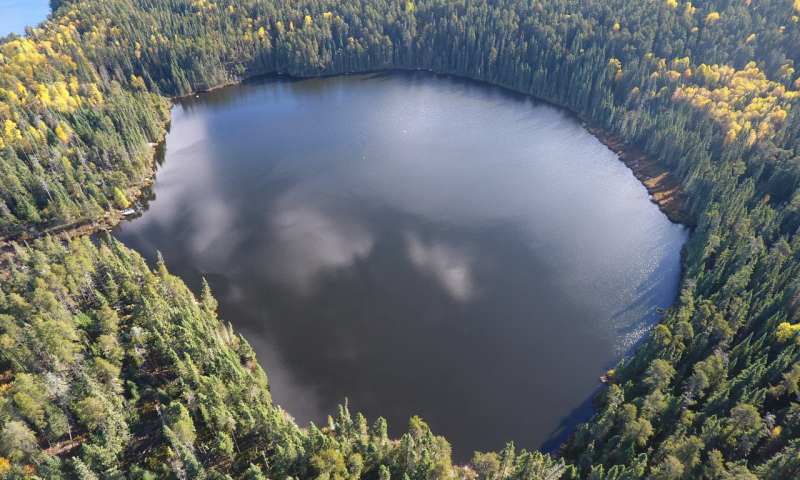Reducing How Much Nitrogen Enters a Lake Has Little Impact on Algal Blooms
Published on by Water Network Research, Official research team of The Water Network in Academic
Lakes suffering from harmful algal blooms may not respond to reduced, or even discontinued, artificial nitrogen loading.
Many blue-green algae responsible for algal blooms can fix atmospheric nitrogen dissolved in the water, and therefore water stewards should focus their efforts on removing phosphorus from lakes to combat algal blooms.

Drone shot of Lake 227 at IISD Experimental Lakes Area where the experiment on eutrophication has been taking place since 1969. Credit: IISD Experimental Lakes Area
This is according to a recently published article in Springer’s Ecosystems journal, Biological Nitrogen Fixation Prevents the Response of a Eutrophic Lake to Reduced Loading of Nitrogen: Evidence from a 46-Year Whole-Lake Experiment. The paper presents the results of a 46-year whole-ecosystem experiment at IISD Experimental Lakes Area in northwestern Ontario, Canada.
Since 1969, researchers have been artificially manipulating a lake by adding varying amounts of carbon, nitrogen, and phosphorus to investigate the nutrients responsible for algal blooms. Throughout the experiment, researchers have been continually adding phosphorus.
However, forty years ago, researchers began reducing the amount of nitrogen they were adding to the lake, and from 1990-2013, they cut artificial nitrogen loading to zero. Despite these dramatic cuts in nitrogen loading algal blooms continued to cover the lake.
“We have been researching the role of artificial nitrogen in algal blooms for almost 50 years now, and these latest results clearly demonstrate that ceasing nitrogen loading into lakes has little effect on the size or duration of algal blooms,” said Dr. Scott Higgins, Research Scientist at IISD Experimental Lakes Area and lead author on the paper.
“A number of algal species can make up for nitrogen deficits by fixing atmospheric nitrogen that is dissolved in the water. What is clear here is that phosphorus is the key driver of algal blooms in lake environments,” added Higgins.
These results have clear implications for policy geared towards reducing algal blooms—especially for jurisdictions dealing with limited budgets.
Read full article: IISD
Read paper Biological Nitrogen Fixation Prevents the Response of a Eutrophic Lake to Reduced Loading of Nitrogen: Evidence from a 46-Year Whole-Lake Experiment HERE
Media
Taxonomy
- Resource Management
- Water Resource Management
- Environment
- Lake Management
- Monitoring & Control
- Environmental Research